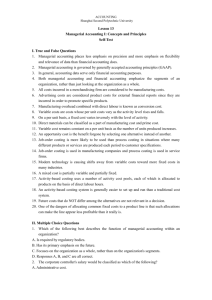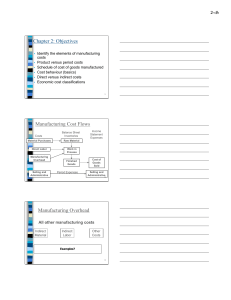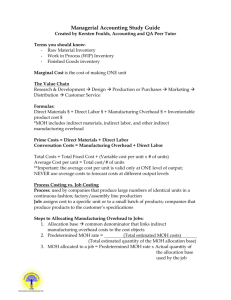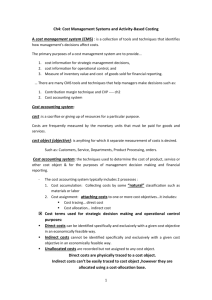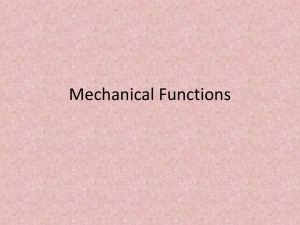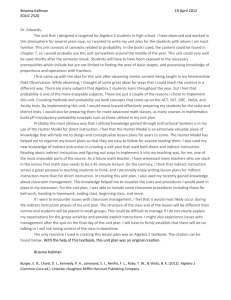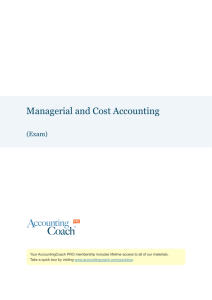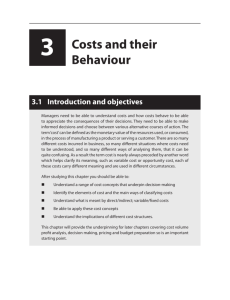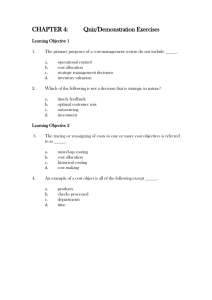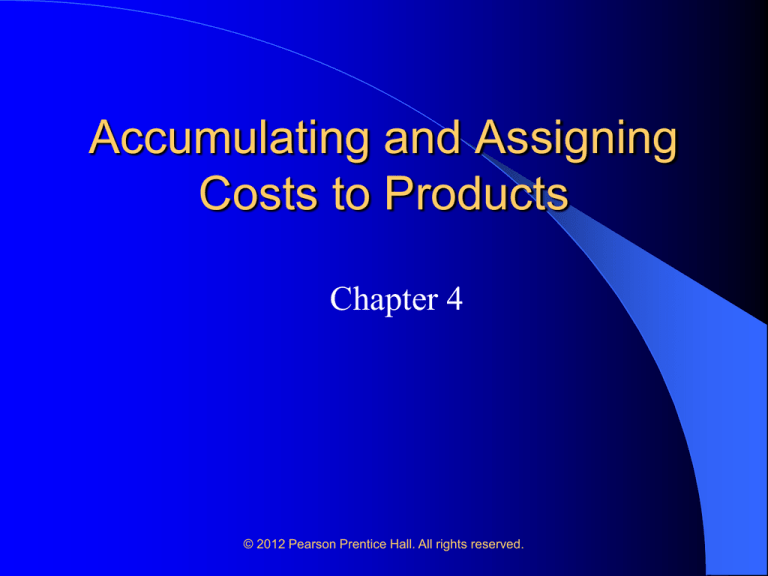
Accumulating and Assigning
Costs to Products
Chapter 4
© 2012 Pearson Prentice Hall. All rights reserved.
Cost Flows in Organizations
In order to compute product costs, management
accounting systems should reflect the actual cost
flows in an organization
Manufacturing, retail, and service organizations
have different patterns of cost flows resulting in
different management accounting priorities
© 2012 Pearson Prentice Hall. All rights reserved.
Cost Flows in a Manufacturing
Organization
3
Cost Flows in a Retail
Organization
4
Cost Flows in a Service
Organization
5
Cost Terms
Cost Object—is anything for which a cost is
computed
– Examples of cost objects are: activities, products,
product lines, departments, or even entire
organizations
© 2012 Pearson Prentice Hall. All rights reserved.
Resource Costs
Consumable Resource
Consumed or used up by the
production process
Cost of depends on how
much of the resource is used
Examples
Capacity-Related Resource
Supports the production
process
Cost depends on how much
of the resource is acquired
Examples
– Wood in furniture making
– Supervisory labour
– Engines in auto making
– Warehouse space
– Processors in laptop making
– Admin Employees
7
Cost Terms
Direct Cost—a cost that is uniquely and
unequivocally attributable to a single cost object
– Almost all variable costs are direct costs
Indirect Cost—a cost that fails the test of being
direct is classified as indirect
– Most capacity-related costs are indirect
© 2012 Pearson Prentice Hall. All rights reserved.
Direct vs. Indirect
Which costs are direct/indirect of you going to WLU?
Tuition
Joining a sorority
Buying a laptop
Additional fees on Laurier bill (excl tuition)
Books
Costing System Architecture
10
Applied and Incurred Indirect
Costs
11
How are Indirect Costs
Applied?
12
The Best Arguments for Using
Practical Capacity
Provides a solid basis to compute long run cost
Isolates the cost of idle capacity which is charged
to the income statement instead of being included
in inventory valuations
13
Product Costing
Job Order
Process Costing
Allocates costs to products
that are readily identifiable
Average costs over large number of
nearly identical units
Common in construction,
print shops, unique goods
Common in chemical, textiles,
lumber, glass, food processing
Accumulate costs for
specific jobs
Accumulate costs
by departments
Produce for sale
Produce for inventory
Job-Order Costing – An
Overview
Direct Materials
Job No. 1
Direct Labour
Manufacturing
Overhead
Job No. 2
Job No. 3
Charge direct
material and
direct labour
costs to each
job as work is
performed.
Direct Manufacturing Costs
Direct Materials
Job No. 1
Direct Labour
Manufacturing
Overhead
Job No. 2
Job No. 3
Manufacturing
Overhead,
including
indirect
materials and
indirect labour,
are allocated
to all jobs
rather than
directly traced
to each job.

